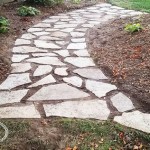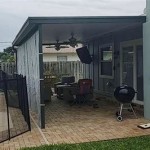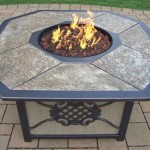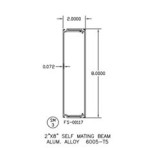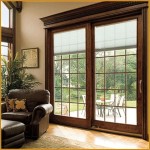Patio Wood Flooring: A Comprehensive Guide
Patio wood flooring represents a sophisticated and aesthetically pleasing outdoor surface solution. It transforms plain concrete slabs or bare ground into inviting, comfortable, and stylish extensions of the home. The selection, installation, and maintenance of patio wood flooring require careful consideration of various factors to ensure longevity, performance, and aesthetic appeal. This article provides a comprehensive overview of patio wood flooring, covering material options, installation techniques, maintenance procedures, and key considerations for a successful and enduring outdoor flooring project.
The popularity of patio wood flooring stems from its ability to offer a warmer, more natural feel compared to concrete, stone, or tile. Wood, with its inherent textures and tones, introduces an element of organic beauty that can seamlessly blend with the surrounding landscape. This natural aesthetic, combined with the potential for customization through staining and finishing, allows homeowners to achieve a unique and personalized outdoor living space.
Selecting the appropriate wood species is the first critical step in ensuring a durable and attractive patio floor. Different wood types possess varying degrees of resistance to moisture, insects, and decay, factors significantly influencing the lifespan of the flooring. Hardwoods, known for their density and durability, are generally preferred for outdoor applications. However, certain softwoods, when properly treated, can also provide viable and cost-effective options.
The installation process is equally important, as improper installation can lead to premature failure, warping, or other structural issues. Proper drainage, adequate ventilation, and secure fastening are essential elements of a successful patio wood flooring installation. Furthermore, choosing the right installation method, whether direct application, floating deck, or modular tiles, depends on the specific site conditions and the desired outcome.
Regular maintenance is crucial for preserving the beauty and extending the lifespan of patio wood flooring. Cleaning, sealing, and occasional refinishing are necessary to protect the wood from the elements and prevent damage. The specific maintenance requirements vary depending on the wood species, the finish applied, and the climate in which the patio is located. Adhering to a consistent maintenance schedule will ensure that the flooring remains in optimal condition for years to come.
Understanding Wood Material Options
The choice of wood species is paramount when it comes to patio wood flooring. The intrinsic properties of each species dictate its suitability for outdoor exposure. Hardwoods generally offer greater resistance to wear and tear, decay, and insect infestation, making them ideal choices for high-traffic areas. Softwoods, while often more affordable, require preservative treatments to enhance their durability.
Ipe: Ipe is a Brazilian hardwood renowned for its exceptional density and durability. It is naturally resistant to decay, insects, and moisture, making it an excellent choice for patio flooring. Its rich, dark brown color and fine grain add a touch of elegance to any outdoor space. Ipe's inherent strength allows it to withstand heavy foot traffic and harsh weather conditions without significant wear or damage. While more expensive than other options, its longevity and minimal maintenance requirements often make it a cost-effective choice in the long run.
Teak: Teak is another highly sought-after hardwood for outdoor applications. Its natural oils and resins provide exceptional resistance to water damage, decay, and insects. Teak's golden-brown color and smooth texture contribute to a luxurious and inviting atmosphere. Its dimensional stability minimizes warping and cracking, even in fluctuating temperatures and humidity levels. Like Ipe, teak is a premium material with a higher initial cost, but its long-term performance and aesthetic appeal justify the investment for many homeowners.
Cedar: Cedar is a softwood known for its aromatic scent and natural resistance to decay and insects. While softer than hardwoods like Ipe and Teak, cedar offers a more affordable alternative for patio wood flooring. Its reddish-brown color and distinctive grain patterns create a warm and rustic aesthetic. Cedar requires regular sealing and maintenance to protect it from moisture damage and prevent weathering. However, with proper care, it can provide a beautiful and durable patio floor for many years.
Pressure-Treated Pine: Pressure-treated pine is a softwood that has undergone a chemical treatment to protect it from decay, insects, and fungal growth. This treatment makes it suitable for outdoor use, including patio flooring. Pressure-treated pine is the most affordable option for patio wood flooring, making it a popular choice for budget-conscious homeowners. However, it is essential to choose pressure-treated pine that is specifically designed for exterior use. Regular sealing and maintenance are required to prevent warping, cracking, and discoloration. Despite its limitations, pressure-treated pine can provide a functional and aesthetically pleasing patio floor when properly installed and maintained.
Beyond these common choices, other wood options exist but necessitate careful research and consideration of local climate impact. Factors like UV exposure and average rainfall influence wood degradation, making species selection a crucial decision.
Key Installation Considerations
The success of a patio wood flooring project hinges on proper installation. A well-executed installation ensures the longevity, stability, and aesthetic appeal of the flooring. Several key factors must be considered to achieve a successful outcome.
Substrate Preparation: Proper substrate preparation is essential for creating a stable and level base for the wood flooring. The substrate, which is the surface beneath the flooring, must be clean, dry, and free of debris. For concrete patios, any cracks or imperfections should be repaired before installing the wood flooring. If the patio is built on the ground, a layer of gravel or crushed stone should be laid to provide drainage and prevent moisture from wicking up into the wood. The substrate should be sloped slightly to allow water to run off easily.
Drainage and Ventilation: Adequate drainage and ventilation are critical for preventing moisture damage and promoting airflow beneath the wood flooring. Moisture can lead to decay, warping, and fungal growth, significantly reducing the lifespan of the flooring. Proper drainage ensures that water does not accumulate beneath the flooring, while ventilation allows air to circulate and dry out any moisture that may be present. These can be achieved by installing the wood on sleepers with gaps in between for airflow, or by using materials that elevate the wood and allow for water run-off.
Fastening Methods: The method used to fasten the wood flooring to the substrate is also important. Screws, nails, or clips can be used, depending on the type of wood and the desired aesthetic. Stainless steel fasteners are recommended to prevent corrosion and rust. The fasteners should be spaced appropriately to ensure that the wood is securely attached to the substrate. For floating deck installations, the wood flooring is not directly attached to the substrate; instead, it is held in place by its own weight and interlocking connections.
Expansion and Contraction: Wood expands and contracts with changes in temperature and humidity. It is essential to account for this movement during installation by leaving expansion gaps between the wood planks or tiles. These gaps allow the wood to expand and contract without putting stress on the surrounding structures. The size of the expansion gaps depends on the wood species, the moisture content of the wood, and the climate in which the patio is located. Failure to provide adequate expansion gaps can lead to warping, cracking, and buckling of the wood flooring.
Sealing and Finishing: After installation, the wood flooring should be sealed and finished to protect it from the elements and enhance its aesthetic appeal. Sealants protect the wood from moisture, UV damage, and staining. Finishes can enhance the color and texture of the wood, providing a desired look and level of sheen. The choice of sealant and finish depends on the wood species, the desired aesthetic, and the level of maintenance required. Regular reapplication of sealant and finish is necessary to maintain the protection and appearance of the wood flooring.
Essential Maintenance Procedures
Proper maintenance is crucial for preserving the beauty and extending the lifespan of patio wood flooring. Neglecting maintenance can lead to premature wear, damage, and costly repairs. A consistent maintenance schedule ensures that the flooring remains in optimal condition for years to come.
Regular Cleaning: Regular cleaning removes dirt, debris, and mildew that can accumulate on the wood flooring. Sweeping or vacuuming the flooring regularly prevents the buildup of dirt and debris. Washing the flooring with a mild soap and water solution removes stubborn stains and mildew. Avoid using harsh chemicals or abrasive cleaners, as these can damage the wood. A power washer can be used to clean the flooring, but it is essential to use a low-pressure setting and avoid holding the nozzle too close to the wood. Regular cleaning helps maintain the appearance and prevents the colonization of damaging organisms.
Sealing and Refinishing: Sealing and refinishing the wood flooring protects it from moisture damage and enhances its aesthetic appeal. The frequency of sealing and refinishing depends on the wood species, the finish applied, and the climate in which the patio is located. Generally, the flooring should be resealed every one to two years. Before resealing, the flooring should be cleaned thoroughly and allowed to dry completely. The old sealant should be removed and the new sealant applied according to the manufacturer's instructions. Refinishing involves sanding the wood to remove the old finish and applying a new finish. Refinishing is typically required every five to ten years, depending on the wear and tear on the flooring.
Addressing Damage Promptly: Addressing damage promptly prevents it from escalating and causing further problems. Cracks, splinters, and loose boards should be repaired as soon as they are noticed. Small cracks can be filled with wood filler, while larger cracks may require the replacement of the affected boards. Loose boards should be re-fastened to the substrate. Addressing damage promptly prevents moisture from penetrating the wood and causing further decay. It also helps maintain the safety and stability of the flooring.
Preventative Measures: Taking preventative measures protects the wood flooring from damage and extends its lifespan. Placing mats or rugs at entrances prevents dirt and debris from being tracked onto the flooring. Using furniture pads under chairs and tables prevents scratches and dents. Trimming trees and shrubs that overhang the patio prevents leaves and debris from accumulating on the flooring. Properly winterizing the patio flooring prevents damage from freezing temperatures and snow. Taking preventative measures reduces the need for repairs and refinishing, ultimately saving time and money.
Ultimately, Patio wood flooring offers an elegant and inviting outdoor living space. By carefully considering material selection, employing proper installation techniques, and implementing a consistent maintenance schedule, homeowners can enjoy the beauty and durability of patio wood flooring for many years.

2024 Outdoor Flooring Trends 10 Ways To Upgrade Your Space

Best Woods For Outdoor Living Spaces Signature Hardwood Floors

Outdoor Wood Flooring Beautiful Wooden Floors For Outside

Highest Quality Weather Proof Outdoor Deck Patio Flooring In Toronto

Luxury Outdoor Flooring By Listone Giordano Affordable Designer Amb Design

Interlocking Patio Deck Tiles Hsunns Set Of 30 Outdoor Wood Floor For Garden 12 X Garage Flooring And Indoor Brown A7008 Com

Pros Cons Of Patio Flooring House Washing Experts

How To Maintain Outdoor Wood Flooring Singapore

Outdoor Wood Flooring By Bellotti Larideck

Smilemart 27pcs Indoor Outdoor Wood Flooring Tiles For Patio Garden 12 X Natural Com
Related Posts


